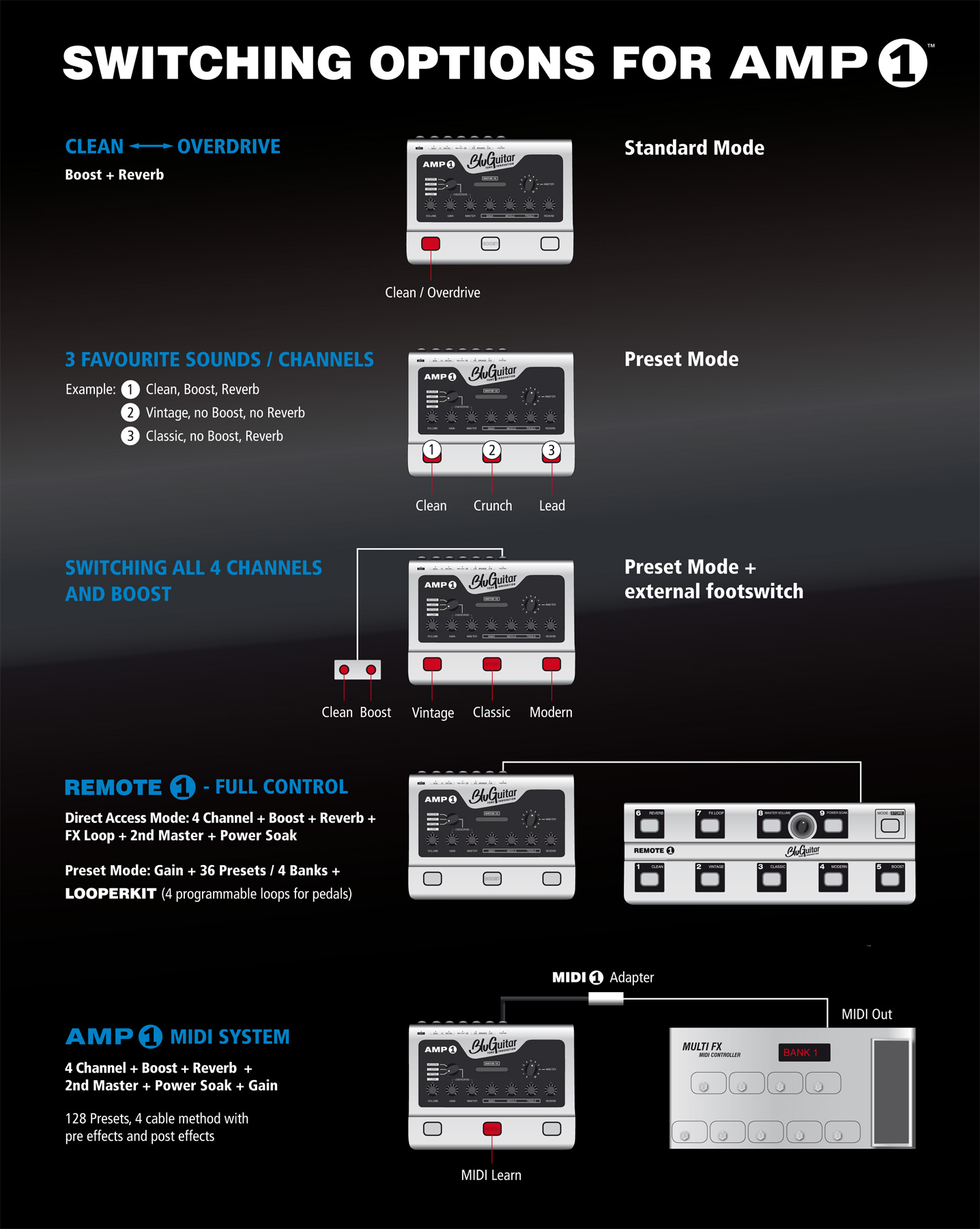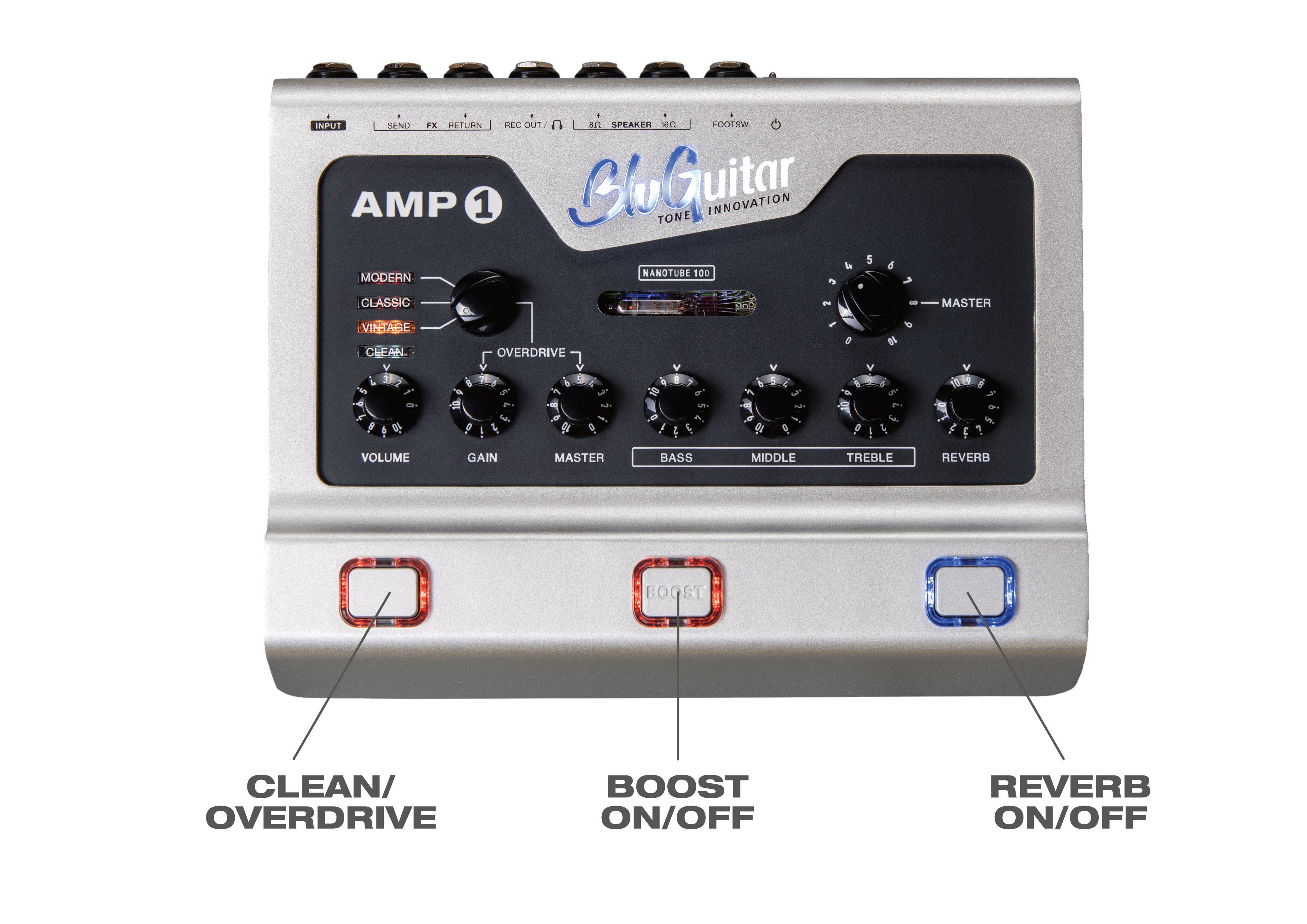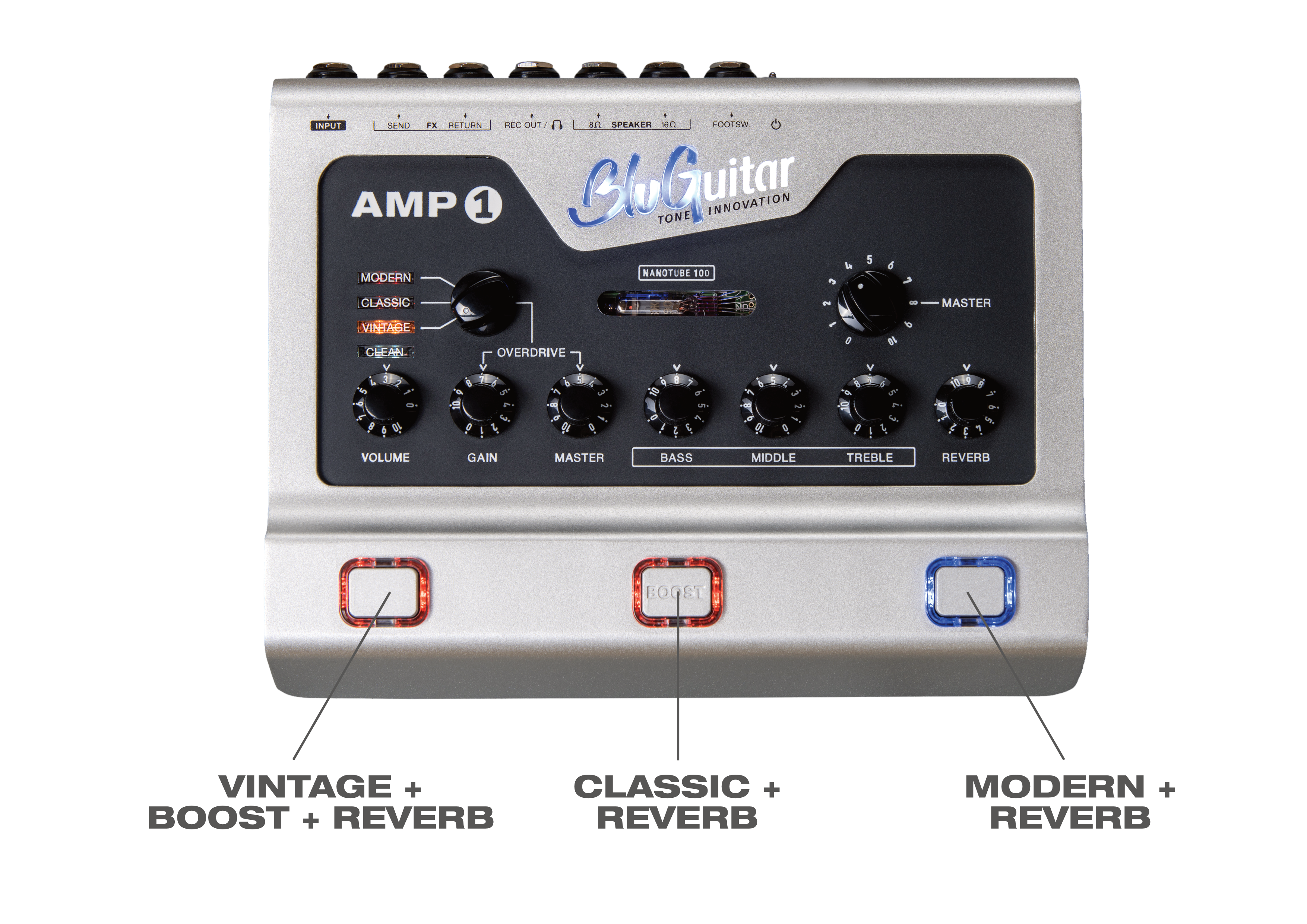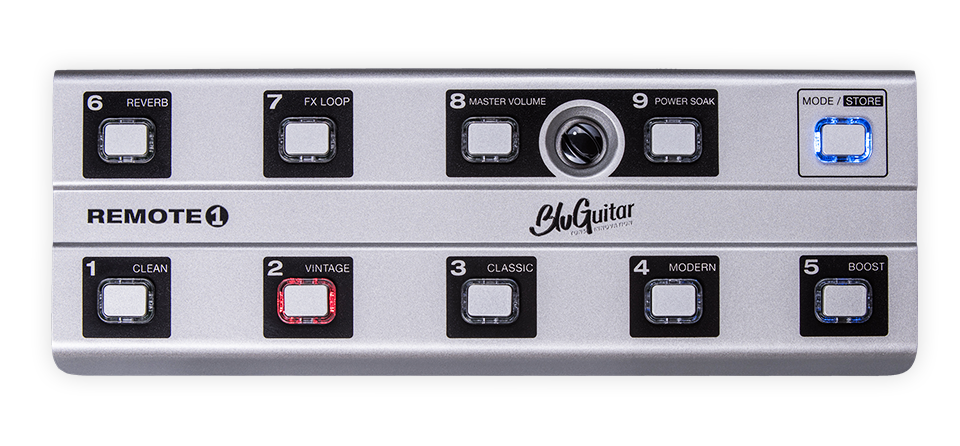What are the switching options for the AMP1?
The AMP1 can be operated in different ways, depending on the application and level of expansion. The scalability of the AMP1 system is also reflected in the versatility of the switching options:

Here is an overview of the available switching options:
Standard Mode / Direct Access Mode
In Direct Access Mode or Standard Mode, the left footswitch always toggles between CLEAN and OVERDRIVE, the middle footswitch toggles BOOST on and off, and the right footswitch toggles REVERB on and off.

Preset Mode
In Preset Mode you can store any combination of channel selection (CLEAN, VINTAGE, CLASSIC, MODERN), BOOST (on/off) and REVERB (on/off) on each of the three footswitches. The settings are retained even after switching the AMP1 off. The following setting is programmed as standard:

The preset mode is extremely practical if you want to work without a REMOTE1 controller and without an additional MIDI board and/or you can get by with only three sounds. In combination with an external 2-way footswitch, you even have access to all 4 channels plus BOOST using the preset mode: see the next switching option info for more!
DeletePreset Mode + External Footswitch
In addition to the REMOTE1 and the MIDI1 adapter, you can connect a latching 2-way footswitch with a stereo jack to the footswitch connection on the AMP1. The two switches on the external footswitch then take over the respective functions of the left and middle internal footswitches of the AMP1 in direct access mode, i.e. CLEAN/OVERDRIVE and BOOST on/off. A mono footswitch can also be used. This then switches between the clean and overdrive channels, so it takes over the function of the left internal footswitch of the AMP1 in direct access mode.
This option is particularly useful if you want access to all 4 channels of the AMP1 without using REMOTE1 or MIDI. To do this, the three internal footswitches are assigned presets in preset mode, in which each of the three switches calls up a different overdrive channel, e.g. VINTAGE for the left switch, CLASSIC for the middle switch and MODERN for the right switch - optionally with BOOST and/or each REVERB on or off. With the double footswitch, you then have access to the CLEAN channel, and thus to all 4 channels. With the second switch on the external double footswitch you can also switch BOOST on and off for each channel or preset.
You can find out which footswitches are suitable and which are not here: AMP1 + external footswitch - Why don't all footswitches work with LEDs?
DeleteREMOTE1

With the help of the REMOTE1, all of the functions of the AMP1 can be selected directly via nine switches and saved in four banks of nine presets each. In addition to direct access to all functions of the AMP1, the REMOTE1 expands the functions of the AMP1 with a second controllable master volume and a controllable and switchable Power Soak. In addition, the gain level for all 4 channels can be saved separately for each preset.
Here you will find an overview of all of the parameters that can be controlled and saved using the REMOTE1.
DeleteMIDI
When a MIDI controller is connected to the AMP1 via the BluGuitar MIDI1 adapter, all switching states of the AMP1 can be recalled by a MIDI program change command sent on MIDI channel 1. This allows up to 128 presets to be created. The assignment is made via the MIDI LEARN function on the AMP1.
Create presets with MIDI LEARN
Set the sound (or the switching states) that you want to save on the AMP1:
- Desired channel (CLEAN, VINTAGE, CLASSIC, MODERN)
- BOOST on/off
- REVERB on/off
- FX loop on/off (only for AMP1 Mercury Edition and AMP1 Iridium Edition models)
With the MIDI1 adapter plugged in, MIDI LEARN is activated with a long press on the BOOST switch. The blinking of the REVERB LED signals that the AMP1 is "armed" and is waiting for a MIDI command. If a valid and unambiguous MIDI program change command is received within 10 seconds, the combination of switching states set above is saved as a preset and the REVERB LED stops flashing. The preset is now called up every time the assigned MIDI program change message is sent to the AMP1 on MIDI channel 1.
By the way: you can find out which parameters you can control using MIDI Control Change commands here: Which parameters on the AMP1 can be controlled using MIDI Control Change (CC)?
Attention: If MIDI LEARN does not work on the AMP1 Silver Edition, it is most likely a device from the very first production batch equipped with the "Direct Access" MIDI software. In that case this article will help you: MIDI LEARN does not work.